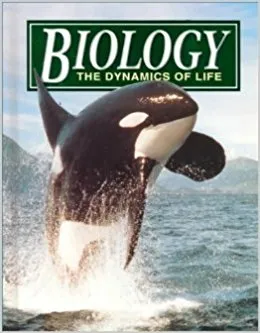This book is called Biology The Dynamics of Life by Alton Biggs, Chris Kapicka and Linda Lundgren. This book was published by The McGraw-Hill Companies, Inc. This book is geared towards the student who wants to study the dynamics of life.
This book has over 1108 pages in it. There are 43 chapters in this book. Get ready to go on a journey into biology! There are so many disciplines that we can learn from and they all take time to build knowledge and understanding of them. We will become students of biology. Let’s explore the many teachings that have been discovered and shared in this field of knowledge!
Cells, plants, vertebrates, invertebrates, human biology, genetics all will be explored and touched on in a way that can be a basic introductory into the different fields. There are 10 units in this book. If you follow these readings and have an area where you can follow along with the activities there will be times where you can do science experiments if you create a lab area for yourself. In the lab you can perform experiments that answer your questions about how, what, or why things happen in the living world around you. Also with pencil and paper we can create a thinking lab and evaluate other scientist’s experiments and data.
Biology is connected to art, literature and other subjects you may be interested in. Through these readings we will find those connections together! As human being we have curiosity about the living world. Living things are complexed and routine cause us to overlook the living world around us and the role we play in the changing of things. How are we connected to the living things around us? Asking questions and searching for answer is the journey of Biology.
Unit 1 – What Is Biology
Chapter 1- Biology: The Science of Life
Section 1.2 – What is Life
Can you identify a living thing from a non-living thing? We can recognize a living thing by the characteristic they have to possess.
Anything that possesses all of the characteristics of life is known as an organism.
All organisms are organized. Living things are able to reproduce. Organisms does not live forever. Life begins as a single cell. Living things evolve during their life time. The growth and development of a single cell allows for reproduction of life and the continuation of an organisms. Living things also adapt to their environment over time. Living things also adjust to stimuli.
The food organisms eat or reproduce dives it energy. The regulation and maintenance of the internal environment of organisms is called homeostasis.
In the science of biology, organisms are the principle objects of study, just as elements are in the science of chemistry and numbers are in the science of mathematicsWork Cited
ISBN 0-02-825431-7
Printed in the United States of America
 Want more followers and upvotes? Try out Steemfollower if you want results!
Want more followers and upvotes? Try out Steemfollower if you want results!
